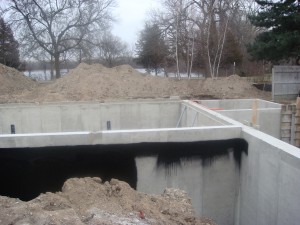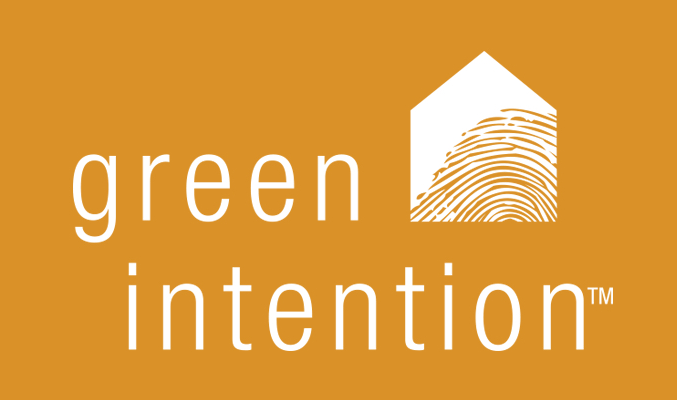 This, the third piece of the credit that tackles material choices, awards points for choosing products that have been extracted, harvested, recovered or manufactured locally. What is local? For LEED purposes, it means within 500 miles of the project site — and that can be either driving distance or as the crow flies, whichever is shorter. Obviously, materials that have to travel fewer miles to get to your house saves transportation fuel compared to say, bamboo, which usually comes from Asia. Many people also care about locally produced products because they prefer to support their local economy. I know of a couple in Texas that wanted everything in their home to be 100% made-in-America. That proved to be pretty difficult for their designer, especially when it came to lighting fixtures. Even if something is assembled in America, many times components of the product come from overseas. And to earn 0.5 point, at least 90% of a given component (by weight or by volume) must meet the requirements for Environmentally Preferable Products.
This, the third piece of the credit that tackles material choices, awards points for choosing products that have been extracted, harvested, recovered or manufactured locally. What is local? For LEED purposes, it means within 500 miles of the project site — and that can be either driving distance or as the crow flies, whichever is shorter. Obviously, materials that have to travel fewer miles to get to your house saves transportation fuel compared to say, bamboo, which usually comes from Asia. Many people also care about locally produced products because they prefer to support their local economy. I know of a couple in Texas that wanted everything in their home to be 100% made-in-America. That proved to be pretty difficult for their designer, especially when it came to lighting fixtures. Even if something is assembled in America, many times components of the product come from overseas. And to earn 0.5 point, at least 90% of a given component (by weight or by volume) must meet the requirements for Environmentally Preferable Products.
For us, this was not a goal, though if ever there were a choice of equal products, I would choose local. (For some reason I care a lot more about local food.) All of our material choices are eligible for points with the exception of paints, coatings, adhesives and sealants. Let’s see if we get any points for this.
1. Exterior – The exterior of our home is made up of three materials: brick, stucco, and reclaimed cypress. The reclaimed cypress is from Duluth Timber, a wonderful company that salvages wood. Duluth: well within the 500 mile range. However, it was reclaimed from old pickle vats from Bick’s Pickles, based in Dunneville, Ontario — 693 miles away. I am a little frustrated that this does not meet the “local” requirement, as our brick and stucco do meet it, but the Reference Manual is clear: “Reclaimed material can be considered locally produced if the reclamation takes plce within 500 miles of the home site.” And the cypress makes up more than 10% of our exterior siding, so no point for a “local” exterior.
2. Wall and roof framing and sheathing – this lumber was provided by Shaw Stewart Lumber Company, so I needed to track down where they got their wood. According to my contact there, even though all the wood is FSC-certified, the plywood came from Oregon and the framing came from Idaho — both farther than the local requirement of 500 miles. No point.
3. Flooring – while we only have one room with cork, cork is harvested in the Mediterranean area, so that would not count as local. Our slate tile comes from Evergreen Slate Company out of Vermont, which is more than 500 miles away. Not local.
4. Foundation – Our foundation work was performed by Nelson Masonry, who got their cement products from Apple Valley Ready-Mix. AVR has nine manufacturing plants, all within the wider Twin Cities area and definitely less than 500 miles. Yes – finally get 0.5 point for local materials!
5. Gypsum board – when we purchased our sheetrock, I specifically requested that it be 100% recycled and local, because our supplier told me he could get that for the same amount of money and the product was the same. Olympic Wall Systems got it from Winroc, which was supplied by National Gypsum out of Fort Dodge, Iowa. Fort Dodge is 218 miles away – which qualifies as local! Another 0.5 point.
6. Cabinets – all of our cabinets were manufactured in Hopkins, Minnesota by Damschen Wood — only about 5 miles away. However, to get 0.5 point for this credit, the wood must have been harvested within 500 miles of Minneapolis. Most of the core material in our cabinets came from Missoula, Montana — 1,182 miles away. Not local; no point.
7. Counters – Our countertops are made out of Richlite is made in Tacoma, Washington – more than 500 miles away. Not local.
8. Doors – Aaron Carlson Architectural Woodwork supplied the doors, and they are located in Minneapolis. BUT, I needed to find out where they got their wood. The doors are from Eggers Industries, based in Two Rivers, Wisconsin, which is local. But where did they get their wood? A very helpful man at Eggers Industries told me this: “The doors were FSC particleboard with paint grade birch veneer. The core is the only material in the construction of the doors which was harvested or recovered within 500 miles of your home. The core makes up 75% of the weight of the door.” That’s great, right? No. LEED for Homes requires that 90% of a component needs to be local; we are at only 75%. No point for local doors. Seems almost criminal.
9. Trim – Aaron Carlson also supplied the interior trim. Some is poplar, and some is fir. This wood comes from Metro Hardwoods out of Maple Grove, a suburb of Minneapolis (also local). Where do they get their wood? An email back from their “green” spokesperson says, “We don’t track the origin of wood unless it is requested in advance. I do know that the fir originates from the west so that would not be regional. The poplar is sourced from multiple regions so I can’t confirm a specific region.” Thank you very much. We did request it the source of wood in advance, because everyone on our team knew we were going for LEED Certification, right? But somehow that got lost in translation. We can’t take a point for local trim.
9. Window framing – H Windows is based in Ashland, Wisconsin — less than 500 miles away! They get their fir wood from Colonial Craft out of Luck, Wisconsin – also less than 500 miles away. They got their wood from the forests of the West Coast. Not local; no point.
10. Roofing – Our roof membrane is EPDM rubber, which is partially made from petroleum-based products. While I don’t know where our EPDM was made, I’m going to guess it’s not locally extracted and not spend any time trying to track it down.
11. Insulation – Our spray foam insulation was technically manufactured on site. However, since spray foam has some petroleum-based products, I doubt we could consider the extraction of the raw materials to be local.
Points for local products: 1 (for foundation and drywall)
Materials & Resources points so far: 11
Cumulative points: 68.5
Additional points needed to get to Gold: 19.5
